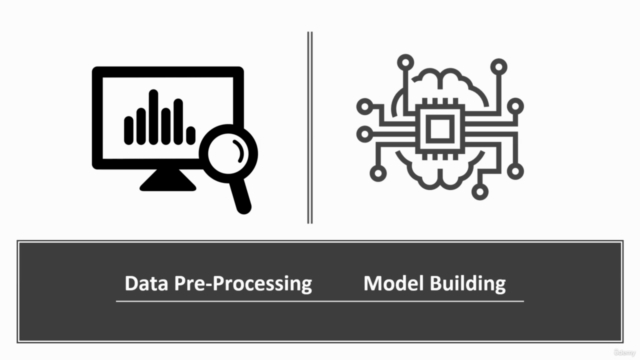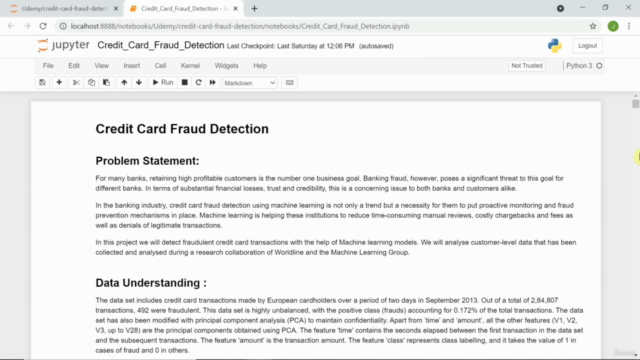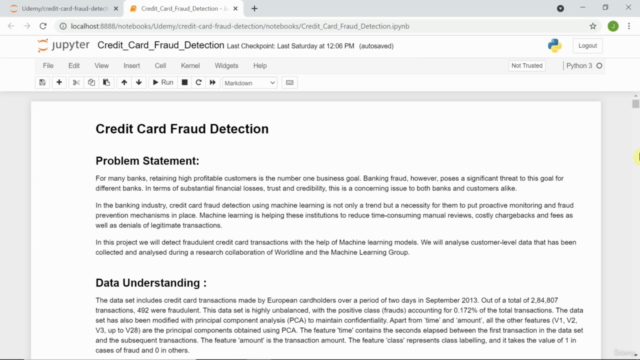Data Science: Credit Card Fraud Detection - Model Building

Why take this course?
🎓 Course Headline: Master Data Science with a Hands-On Project on Credit Card Fraud Detection 🚀
Data Science: Credit Card Fraud Detection - Model Building
Course Overview:
In this comprehensive course, you'll learn to develop a highly accurate Credit Card Fraud Detection model using advanced Machine Learning techniques. This is not just a theoretical course; it's a practical, hands-on project that will guide you through every step of creating and evaluating a machine learning model for real-world data.
🚀 What You Will Cover:
1. Installing Packages.
- Setting up your environment for success.
2. Importing Libraries.
- Essential libraries for Data Science and Machine Learning.
3. Loading the data from source.
- Handling data sources efficiently.
4. Understanding the data
- Initial exploration of the dataset.
5. Checking the class distribution of the target variable
- Analyzing the balance between classes.
6. Finding correlation and plotting Heat Map
- Identifying relationships in the data.
7. Performing Feature engineering.
- Crafting features that matter.
8. Train Test Split
- Dividing the data for model development and validation.
9. Plotting the distribution of a variable
- Visualizing data distributions.
10. About Confusion Matrix, Classification Report, AUC-ROC - Understanding performance metrics.
11. Created a common function to plot confusion matrix - Tools for interpreting model predictions.
12. Logistic Regression, KNN, Tree, Random Forest, XGBoost, SVM Models - Exploring different machine learning algorithms.
13-18. Common functions for model fitting and prediction - Automating the predictive process for efficiency.
19. About RepeatedKFold and StratifiedKFold. - Understanding cross-validation techniques.
20-21. Cross validation with RepeatedKFold and StratifiedKFold - Evaluating model performance with cross-validation.
22-24. Proceeding with the best model, Oversampling with Random Oversampler & SMOTE - Techniques for improving model accuracy on imbalanced datasets.
25-26. Hyperparameter Tuning and Feature Importance Extraction - Refining your model to perform at its best.
27. Final Inference - Drawing conclusions from your analysis.
🎫 Learning Resources:
- Certificate of completion: Earn a certificate from AutomationGig upon course completion.
- Datasets: Access all datasets used throughout the course in the resources section.
- Jupyter Notebook & Project Files: Get hands-on with the provided Jupyter notebook and project files at the end of the course.
📅 Ready to Start?
- Coffee Mug at the ready!
- Enroll Now: Click the button and jump into one of the most demanded skills of the 21st century.
- Join the Learning Community: Let's embark on this journey together!
🎓 Happy Learning!
Remember, this course and its content are for educational purposes only. So, grab your chance to learn Data Science through a real-world application with our Credit Card Fraud Detection project. We can't wait to see you inside the course! 🌟
[Music: bensound] 🎶
Happy Learning and here's to your future success in Data Science! 🚀💡
Course Gallery




Loading charts...